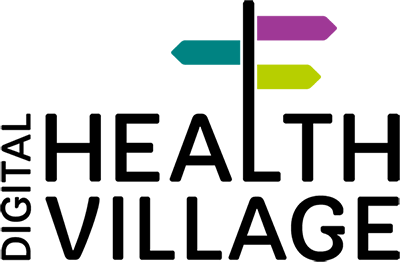The impact assessment of Health Village’s digital care pathways indicates: the greatest cost benefit is generated by scalability
Benefit calculations produced in collaboration between the Helsinki University Hospital (HUS) and KPMG indicate the potential of financial effectiveness of digital care pathways.
According to the results of the calculations, the financial benefits of online coaching that treats severe obesity, have been realised due to a high patient volume. The diabetes pathway would also have the potential to address the challenges of the healthcare system if it was used more.
The benefit calculations compared the operational and financial effectiveness of My Path digital care pathways and traditionally implemented care pathways in Helsinki University Hospital. Compared pathways were diabetes (DM), epilepsy, mitral valve, HealthyWeight coaching (HWC), in vitro fertilization (IVF) and home dialysis.
Significant savings
According to the impact report, HealthyWeight coaching can be estimated to generate cost benefits of 2.1 million in 2023 compared to the traditional treatment of severe obesity. The diabetes pathway would also have the potential to address the challenges of the healthcare system if it was used more.
By 2026, cumulative cost benefits are estimated to be 10.6 million euros. HealthyWeight coaching will be held entirely online, so referrals for this treatment program could be obtained from social and healthcare service centres throughout Finland.
Digital care pathways as a response to treatment availability
Obesity care teams in both specialised medical care and primary healthcare are small and their resources are insufficient to meet the treatment needs.
HealthyWeight coaching will address this need: It allows professionals to have over six times the number of patients in treatment compared to the traditional treatment of severe obesity. Scientific research indicates that HealthyWeight coaching is an effective treatment.
In the HUS area, traditional treatment in primary healthcare can treat around 30 patients per week, whereas the digital HealthyWeight coaching pathway can manage up to 200 patients per week. The time saved and lower labour costs generated by HealthyWeight coaching are significant.
- The calculations of the HealthyWeight coaching pathway indicate that it would be worth investing in the wider adoption of the diabetes pathway for patient care throughout Finland, in accordance with the national treatment recommendations. This would increase treatment availability and multiply the cost benefits: the more users the service has, the lower the costs per patient will be and the more the digital care pathway will contribute to the efficiency of the healthcare system," says Jaana Kotila, Development Manager at HUS IT Management.
Long-term evaluation of digital solutions for care pathways
Information management has become even more important in social and healthcare. The production efficiency of treatments and pathways should be monitored in the long term in cooperation with primary healthcare and specialised medical care.
- In order to make the benefits of digital pathways tangible, the establishment of digital pathways should focus on predictable resource and cost benefits from the very beginning, as well as the implementation of operational change, says Sirpa Arvonen, Lead of eHealth services at HUS IT Management.
How the calculations were carried out
The financial effectiveness of the digital care pathways at Helsinki University Hospital (HUS) was evaluated in cooperation with the hospital units, IT Management and KPMG experts. The management and professionals of the HUS units responsible for diabetes, epilepsy, mitral valve, HealthyWeight coaching, in vitro fertilization and home dialysis care pathways were interviewed, and the data related to the patient groups of the respective care pathway was analysed.
Cost and patient volume calculations by HUS were used as a basis. Moreover, in-depth interviews with professionals on care pathways and the latest medical articles on effectiveness were also taken into account. The calculations were conducted at three different points in the life cycle of the pathway: before the pathway was built, after the pilot and after the pathway had been used for 1–3 years.
- 10.05.2025 12:10
Watch a video about the impact of Health Village - 05.10.2024 11:45
Neuropsychological online rehabilitation improves service availability and generates savings - 29.01.2024 14:39
Health Village service benefits estimated at hundreds of millions of euros - 02.01.2024 08:00
The impact assessment of Health Village’s digital care pathways indicates: the greatest cost benefit is generated by scalability - 15.11.2023 12:45
Impact assessment of digital services helps allocate resources efficiently - 18.04.2023 15:55
The self-care program supports long-term weight management - 14.02.2023 13:16
Customers are equal co-creators in the Rehabilitation Hub - 20.12.2022 14:45
New digital care pathway helps discontinue post-operative pain medication gradually - 04.11.2022 15:08
Online Therapy for Insomnia at Helsinki University Hospital Proven to Be an Effective Treatment - 30.09.2022 14:24
Wound Navigator Helps Physicians and Nurses Examine Wound Patients - 05.08.2022 14:50
Digital Care Pathways Respond to the Patient’s Thirst for Information - 27.06.2022 11:13
Digital Care Pathway for Coronary Artery Disease Patients Awarded - 03.05.2022 15:21
The First Digital Service Pathway of Social Welfare Has Been Opened to Customers - 11.04.2022 13:51
Health Village is proud to be included as one of the Finnish future hospitals - 11.04.2022 13:04
Digital care pathway supports the parents of children with behavioural problems - 12.02.2021 14:28
Finnish healthcare provider stemming the spread of COVID-19 with data and cloud technology - 04.09.2020 18:29
Health Village at HIMSS & Health 2.0 Sep 7-11 - 01.04.2020 15:44
Health Village’s Coronabot Now Also Available in English - 16.03.2020 18:21
Health Village’s Coronabot Helps to Estimate the Likelihood of a Coronavirus Infection - 29.01.2020 08:00
Digital Care Pathway for Gastric Bypass Patients Benefits the Patients and Brings Significant Savings to Society
